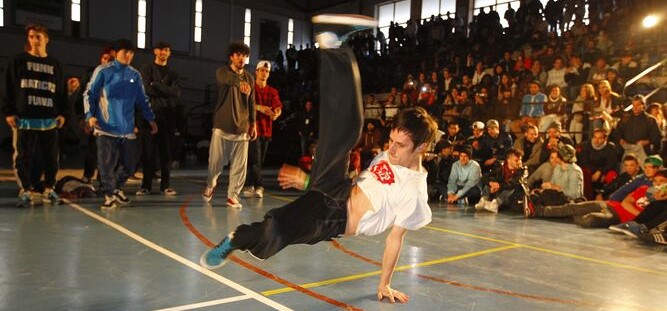
Ferrer Arquitectos Will Design Almería’s First “Break Station”.
https://www.diariodealmeria.es/almeria/Almeria-Break-Station-breakdance_0_1587743233.html

https://www.diariodealmeria.es/almeria/Almeria-Break-Station-breakdance_0_1587743233.html
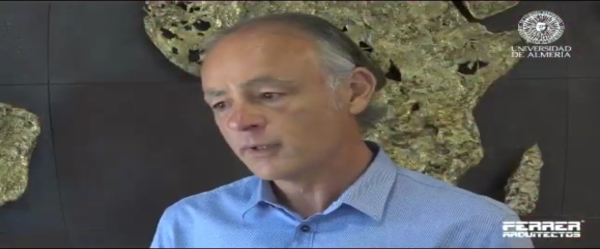
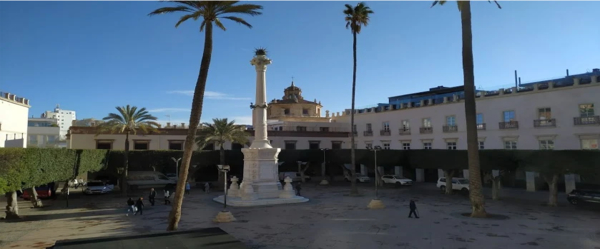
The controversy surrounding the Plaza Vieja in Almería has generated a varied and extensive set of opinions and comments; all respectable, but, in my opinion, not always constructive. Too much underlying tension between ‘coloraos’ versus ‘azules,’ left versus right. For me, a somewhat stale debate at times that, rather than clarifying, has further inflamed positions.
I would like to refer here to the sensory experience of those who visit the square, beyond the political and ideological discussions that have recently fueled this controversy. A square that is one of the best examples of a porticoed main square with a town hall in southeastern Spain and that, without intending to compare, has its precedents in the main squares of other cities in our country such as Salamanca, Valladolid, Madrid, or Córdoba.
Time usually clarifies things as if it were a pan for extracting gold. By shaking the water, the water mixed with the earth detaches the gravel until only the truly essential, the permanent, the valuable remains: the gold nuggets; mixed, yes, with some sand, because extreme purity does not exist. Only approximations.
Reading much of what has been written on this matter over the last few months has produced an effect similar to that caused by each swing in that pan I mentioned, and has led me to the conviction that the real basis behind this controversy has little to do with the ‘coloraos’ or with the convenience of a comprehensive reform of the square. Rather, it responds to confrontations, sometimes absurd, in which people get entangled too often with no other objective than to try to assert a position, for the sake of some reason more personal than collective, and therefore not the one that usually benefits society in general and, therefore, the city.
Among those who are in favor of everything remaining as it is, that is, against the reform of the square, we find arguments that focus on the value of the ‘coloraos,’ those martyrs who fought for freedom; others, on the insensitivity shown by some politician in turn regarding the convenience of honoring them; some referred to the cost of dismantling and relocating the ‘pingurucho’; some more, on the loss of shade cast by the current trees; fortunately very few on the supposed low architectural and urban value of the square.
Regarding those who are in favor of the comprehensive reform, including the relocation of the ‘pingurucho’ and ficus trees, they focus primarily on the opportunity to recover a unique architectural space in Almería; on the vision of a square semi-hidden in recent decades; on the opportunity to have a more flexible space adapted to any public event; on the fact that it was in the electoral program of the ruling party and, therefore, the reform is taken for granted; or on the fact that recovering the essential values of the square is not incompatible with the value and maintenance of the ‘pingurucho’ and ficus trees, as they can be moved to another more suitable location.
However, the opinions against the reform have been much louder, although, in my opinion, they do not reflect the majority feeling of Almerian society when the problem is well explained. In fact, it is curious that when this issue is discussed in person within small groups of different sensitivities, and I have had the opportunity to debate it in various forums, a majority opinion in favor of the relocation of the ficus trees and ‘pingurucho’ is perceived. And those who are initially against it, if they are not excessively ideologically influenced, tend to accept the possibility of the planned reform as soon as they are given arguments. It seems as if those who are in favor of the relocation of the ‘pingurucho’ and ficus trees do not dare to publicly express their opinion for fear of being labeled as opponents of freedom, defenders of the absolutism of Fernando VII, fascists, not very environmentally friendly, anti-democrats, or any other label that provokes those fears that usually grip us, at times, as human beings. In any case, I respect both those who are against it and those who are in favor, those who express it and those who do not. I am sure that if we delve adequately, everyone has laudable reasons to opine as they do.
Discovering a unique space
My opinion is that, with the relocation of the ficus trees and the ‘pingurucho,’ Almería will discover a unique and singular space of great aesthetic, architectural, and urban value, semi-hidden for many years. A space with a singularity that resides in a set of characteristics such as its generous and optimal dimensions, its adequate proportions, the regularity in the rhythm of its openings and solids, its appropriate scale, its homogeneity, its unitary condition, and the character that permeates its entire constructed ensemble. All of the above make the Plaza Vieja an unprecedented space in our province at an architectural level, regardless of other historical or social considerations. Recovering the diaphanous character of the square, its essence as an urban space that serenely welcomes almost any activity, means discovering its identity, attending to its authenticity.
Currently, the values that the square treasures are difficult to appreciate as they are partially hidden, not only because they are physically covered and their direct vision is hindered, but because the presence of elements, out of scale for that environment or with a high decorative load that act as a visual magnet, such as the ‘pingurucho,’ divert the attention that the rest of the constructed ensemble deserves, including the magnificent dome of the convent of Las Claras, generating an almost optical and aesthetic conflict.
Stripping the square of what, in my opinion, is foreign to it, would give it greater urban intensity, greater clarity, in contrast to that insipid, confused, and bland state lacking the character it currently transmits.
The Almerian architect José Ángel Ferrer, during a conferenceLA VOZ
Now, just as I say the above, positioning myself in favor of a clear Plaza Vieja, without the ficus trees and without the ‘pingurucho,’ I also think it is convenient to state the following:
The ‘pingurucho’ should be located in a preferred and relevant place. For me, the best by far would be where the southern obelisk of the ‘rambla’ is currently located, thus functioning as a background perspective and establishing an adequate relationship with the nearby sea. In this way, we would recover the memory of the place where the ‘coloraos’ entered and were assassinated, establishing a necessary and adequate dialectic between both spaces. However, this would require eliminating the obelisk that was so successfully located at that point on the ‘rambla.’ Therefore, if we have to look for another alternative, perhaps a solution could be the beginning of the Nicolás Salmerón park in front of the Gran Hotel, but that space would have to be very well conditioned so that the ‘pingurucho’ is presented with all the splendor it deserves, avoiding it appearing as a residual and decontextualized element.
The ficus trees could be transplanted if their cost is reasonable. The important thing is the tendency to increase vegetation in our city, regardless of specific episodes that require dispensing with some trees sporadically for the sake of some action of greater importance. Creation always implies destruction. There is no need to be afraid to eliminate something if it does not have great value or can be arranged in another place with equal or better results. And this is the case, both for the trees and for the ‘pingurucho.’
Finally, and no less importantly, the future square should be designed and executed with the greatest success and wisdom possible. From my modest opinion, I would like to suggest that the design of the planned pavement that has appeared in some media and social networks be reconsidered. I believe that the new pavement of the square should not become an element with too much prominence that could come into visual conflict with the rest of the space. A more neutral pavement that underlines the porticoed gallery and the facade of the town hall could be somewhat more appropriate. Also, creative and innovative shade elements should be arranged, where natural vegetation can be accommodated, avoiding the typical and conventional pergolas or umbrellas. Thus, the Plaza Vieja should be transformed into a modern space, but maintaining its essence and original character.
In short, a square that becomes a reference for our province, an anteroom and vestibule of the route towards the absent Alcazaba, acting as a link between the historical center and the monument that gave rise to the city.

On December 18, 2019, José Ángel Ferrer gave a lecture on SUSTAINABLE ARCHITECTURE at the Torreluz hotel in Almería to an audience linked to the home construction sector. José Ángel spoke about different strategies to accredit SUSTAINABLE ARCHITECTURE in buildings and delved into some of the organizations that currently lead the certification of sustainable buildings such as BREEAM or LEED. Ferrer explained some details of the process of accrediting the sustainability of some buildings that Ferrer Arquitectos has designed with sustainability criteria, such as the PITÁGORAS building or a recent project of 84 homes for NEINOR HOME in Mojácar. He placed special emphasis on the social and economic benefits generated by a building with sustainable accreditation and also referred to all the expenses involved in the construction of a sustainable building, from the construction aspects to those corresponding to the entire certification accreditation process.
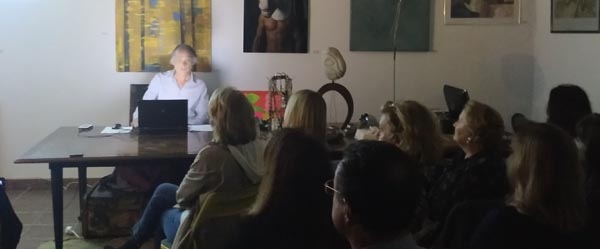
Lecture by our director, José Ángel Ferrer, in the KOKORO hall in Almería, where he inaugurated a series of gatherings that will continue in the coming months. Ferrer, in a room completely full of attendees, presented several projects from our studio, carried out in the surroundings of the historical center of Almería, with a significant component of sustainability and design, two hallmarks of our projects. After the lecture, there was a lively discussion.
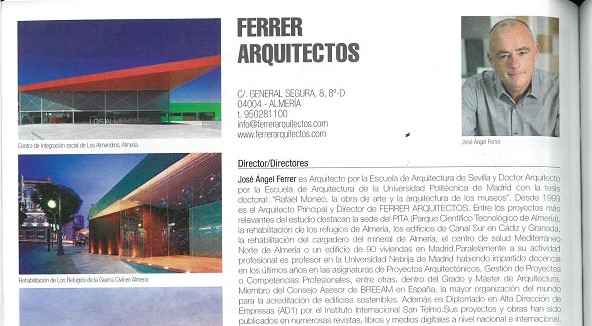
Ferrer Arquitectos appears in the 2019-2020 Architecture Studies Guide of Promateriales Magazine. Along with our Studio, the most relevant Studios at the national level today appear.